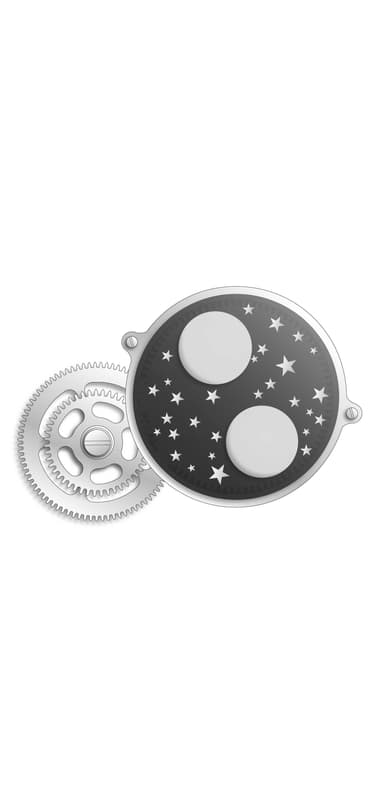Moon phase display
The difficulty in displaying the moon phase on the dial of a watch comes from the fact that the moon does not follow a daily rhythm in its orbit around the Earth. A cycle from new moon to new moon – one lunation – does not last 30 days, but exactly 29 days, 12 hours, 44 minutes, and 2.88 seconds. Therefore, a period of 30 days must be slowed down to come as close as possible to one lunar cycle. This is achieved by placing a reduction gear between the day star and the moon phase disc. The key to high precision lies in the number of wheels used, their proportions and the number of teeth they have. IWC’s moon phase displays are calculated to the highest precision and accuracy.
